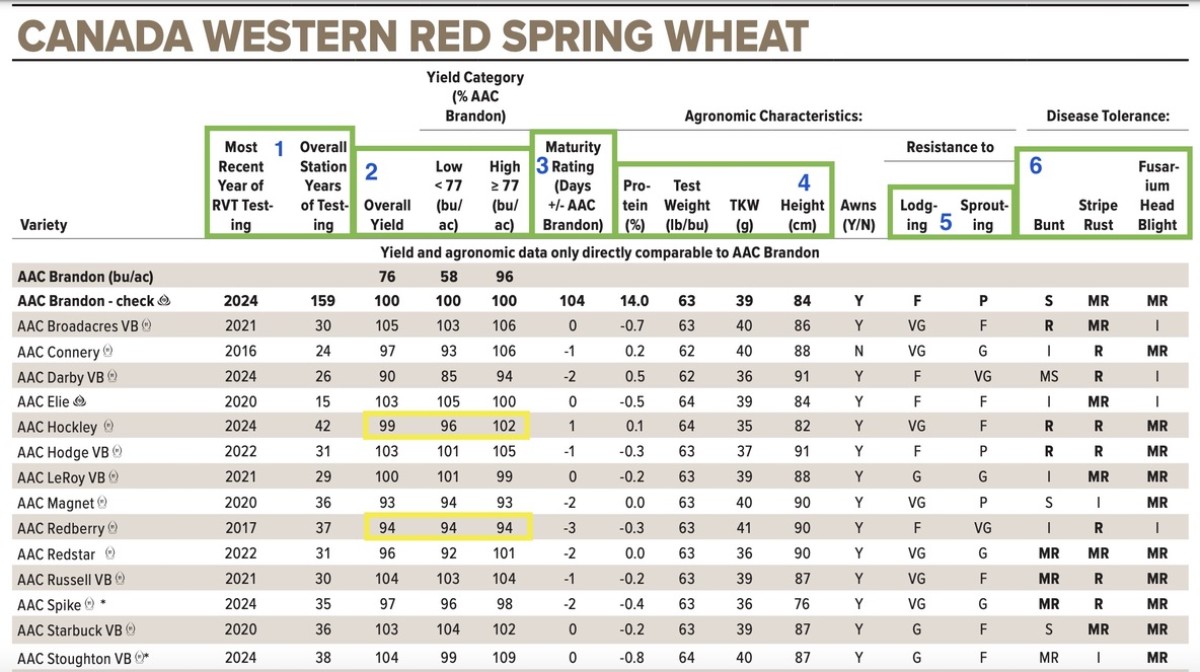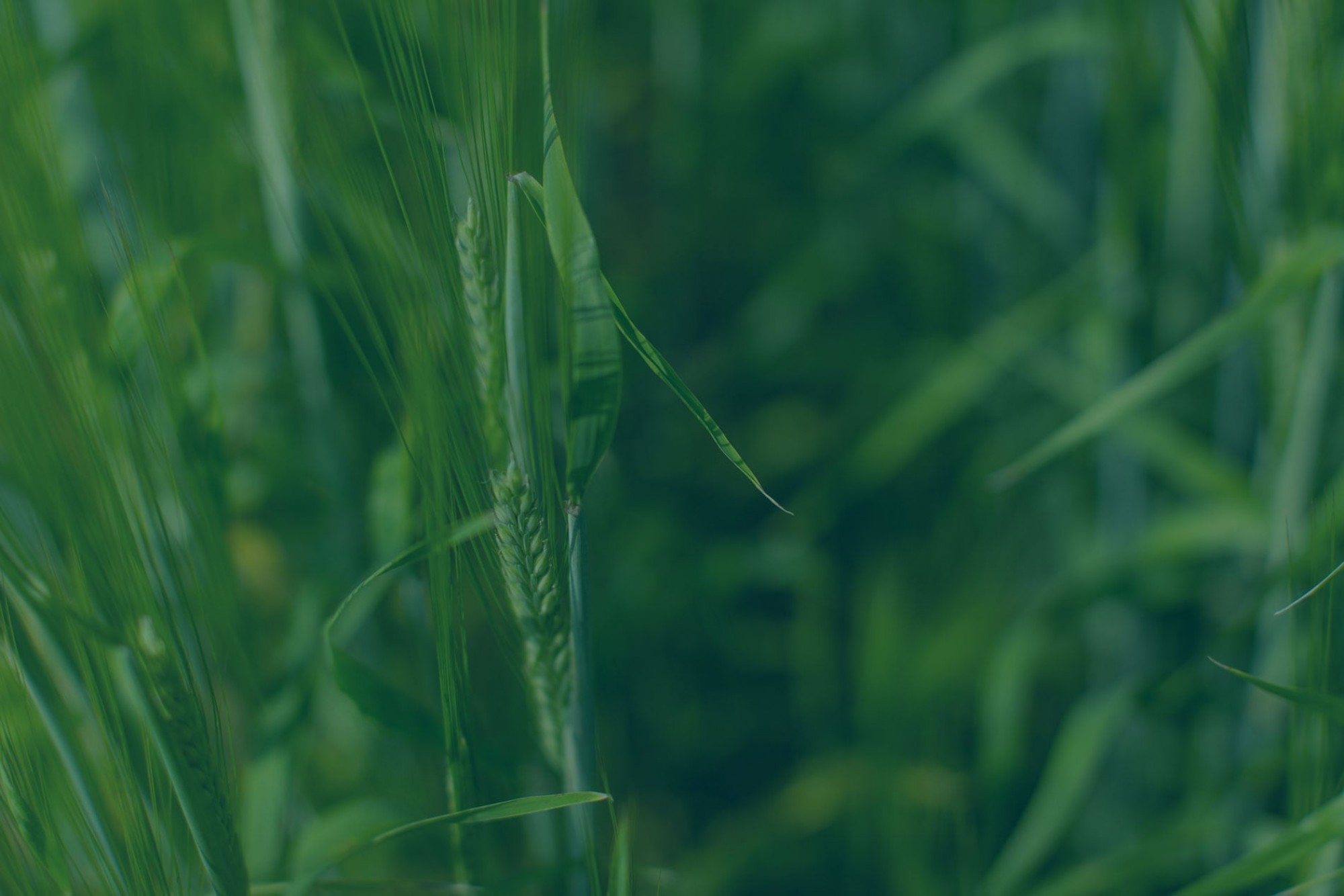Variety Selection using the seed guide – 2025
Written by: Sheri Strydhorst, PhD, PAg, former Regional Variety Trial Coordinator, Alberta Regional Variety Advisory Committee (ARVAC); Rob Graf, PhD, Retired Agriculture and Agri-Food Canada, Past-Chair, ARVAC; Ruoxi Xia, Agronomy Extension Specialist, Alberta Grains.
The greatly anticipated Alberta Seed Guide has arrived in producer mailboxes, and growers will be scouring the tables to see the latest, greatest options for the next growing season.
Variety selection is a huge part of decision-making on Alberta farms. Each year, farmers decide if they will be ‘upgrading’ to a new variety. After harvest, growers will assess the yield performance, standability, disease tolerance, insect resistance and grain quality of the variety they grew. There are many scenarios where growers are looking for something better. However, it can be a challenge for growers to choose the best variety for their farming operation.
The Alberta Seed Guide is an important resource for cereal variety selection. It provides unbiased information on variety performance that is vetted by over 40 industry experts from experts across the seed value chain. To ensure the accuracy of variety performance, the seed guide uses the following protocols and quality checks:
- Regional variety trials (RVT) are conducted at multiple sites across different regions of the province. This ensures variety performance is tested under different soil zones and environmental conditions.
- Regional variety trials are planted and maintained following the agronomic practices that align with commercial producers, so variety performance from the RVT trials aligns with how they perform in farmers’ fields.
- New spring wheat and barley varieties are tested for at least 2 growing seasons before being included in the seed tables. A variety is grown in trials for a minimum of three growing seasons before it is considered fully tested. This ensures there are sufficient and accurate performance data.
What’s new in January 2025 Alberta Seed Tables?
The changes in the Spring 2025 Alberta Seed Guide occurred in two areas. The first is the addition of new varieties after they completed their 2 years of testing. The other is changes to check varieties to reflect new standards as improved varieties emerge and become popular.
New varieties added to the seed tables
The following new varieties were added to the seed tables as they now have 2 years of RVT testing. While assessing performance of the new varieties, growers should assess yield performance, agronomic traits (lodging resistance, maturity, etc.) and disease resistance. See below for more details of making the most out of the seed table.
-large.png)
PBR protection under UPOV 91
* = PBR application filed and subject to provisional protection.
= Variety Use Agreement applied (http://seeds-canada.ca/variety-use-agreement/)
1 OReBoost is a forage oat variety
Change to check varieties:
Check varieties are updated when the old check varieties no longer reflect industry standards, and/or a new variety sees increasing acreage and is more representative of commercial production trends. Changes to check varieties are done very carefully, examining where the old and new checks were grown in the same trials for at least three years. After that, data are adjusted relative to the new check.
In 2025, a change of check varieties occurred in:
-large.png)
How to make the most out of the seed tables?
The seed tables are packed with columns showcasing variety performance for yield, agronomic performance, and disease resistance. By diving into an example table, we'll explore each column step by step, uncovering how to make the most of these data.
Note: Additional information on interpreting the seed tables can be found on the Alberta Seed Guide website.

1. Overall site-years of testing and most recent year of testing
These two columns provide information on how representative and recent the data are. The varieties that are tested more recently are compared head-to-head with the current check and thus, have more recent data. A variety with 2024 as the most recent year of testing was also likely grown in the 2023, and possibly in 2022. A variety with 2021 as the most recent year of testing was likely grown in 2019, 2020, and 2021. The varieties with more overall site-years of testing have a more robust dataset, since they were likely grown over a wider range of conditions. For example, there is more confidence in yield data for a variety that has 38 vs 15 sites years of data.
2. Yield
Yields are reported in 3 columns in the seed guide: Overall, Low and High.
The low vs high yield categories have been added because varieties may perform differently in these broad environmental divisions. For example, in the table above, AAC Hockley yields 102% of AAC Brandon in the high yield category; while in the low yield category, it yields 96% of AAC Brandon. This suggests that AAC Hockley performs better than the check in a higher yield potential environment and may not be a high-yielding option in a low yield potential environment. In contrast, AAC Redstar yields 94% of AAC Brandon consistently across yield categories, indicating yield stability.
To assess the expected productivity of a certain variety, follow the following steps
- Set a realistic yield target for the season based on historical yields and local conditions
- Compare if the yield target is within the low or high yield categories
- Assess expected productivity within the yield category
It is also helpful to consult with local seed growers about local variety choices as they have field scale experience with variety performance in your growing region.
To make effective use of yield comparison tables:
Exercise caution when making yield comparisons among varieties. A variety’s yield should only be directly compared to the standard check. Actual head-to-head testing between other varieties may not have occurred.
Varieties are tested without any fungicide application. Growers should keep in mind that application of a foliar fungicide may significantly increase yields on some varieties.
Finally, the highest yielding variety may not always be the best choice for your farm and its particular circumstances. A good practice is to first decide which agronomic characteristics and disease resistance traits are most important. This will reduce the list considerably and make the choice based on yield more obvious.
3. Maturity
Variety maturity is an important consideration, especially in parts of the province where the growing season length is limited. Please note, varieties may take longer to mature when conditions are cool and/or wet. Under such conditions, the extra “1 day” to maturity in the table may mean more than 1 day in reality.
4. Quality
Protein, test weight and thousand kernel weight (TKW) are important quality parameters. Please note that the data listed in the table only reflects the genetic differences. Grain quality from a specific field will vary and should be tested by accredited labs.
5. Resistance to lodging and sprouting
Resistance to lodging: if the farm/region regularly experiences lodging damage, consider choosing a variety that has better lodging resistance. In addition, if the planned inputs (ie: fertilizer rate) is high, the crop will be more prone to lodging. Selecting a variety with better lodging resistance is more likely to provide benefits in high yielding environments.
Resistance to sprouting: Tested in the lab, resistance to sprouting measures the likelihood of pre-harvest sprouting under cool, wet harvest conditions Sprouting activates enzymatic processes in the seed that reduce falling number of the grain and impacts quality. If growers have concerns about pre-harvest spouting, consider choosing a variety with VG or G ratings.
6. Disease resistance
Disease resistance of varieties is tested during registration trials. Disease resistance levels, from most susceptible to the most resistant, are:
- S: susceptible
- MS: moderately susceptible
- I: intermediate
- MR: moderately resistant
- R: resistant
Consider the disease history on the farm. If certain diseases have caused significant yield/quality damage, choosing a more resistant variety is one of the most important and effective tools.
More specifically, if a variety is rated susceptible (S) or moderately susceptible (MS) to common bunt, it should be treated with systemic fungicide as even low levels of infection will restrict marketability.
Note that varieties moderately resistant (MR) or resistant (R) to FHB are not immune to this disease. Under severe epidemics, all varieties will sustain damage. FHB should be managed using multiple management tools. These include:
- Testing seed for the presence of Fusarium graminearum (Fg).
- Selecting seed lots with low Fg infection levels.
- Treating seed with a seed treatment registered to control seed and soil-borne Fusarium spp.
- Choosing varieties with the best FHB tolerance whenever possible.
- Always using best management practices to slow the spread of this disease.
In season FHB risk maps can be found here.
Conclusion: bringing new genetics back to the farm
Growers who ‘upgrade’ to new varieties can improve different aspects of their production. New varieties recommended for registration must demonstrate merit under western Canadian field trials. In this context, merit means that the variety is equal to, or better, than appropriate reference varieties with regard to any single characteristic or combination of characteristics that render the variety beneficial for a particular use. For example, when a grower upgrades to a new feed barley variety with improved standability (such as Oreana or Sirish), this can result in a less stressful and faster harvest. Growers who ‘upgrade’ to a midge-tolerant wheat varietal blend (such as AAC Wheatland VB or AAC Hodge VB) do not need to spray an insecticide to manage wheat midge and have contributed to environmental sustainability by maintaining beneficial insects. Growers who upgrade to a new wheat variety that yields well and tends to produce higher protein (such as AAC Hassler) will have a reduced risk of protein penalties upon delivery at the elevator. The RVTs and Alberta Seed Guide are one tool that helps farmers make informed decisions about the benefits of adopting new varieties.
Acknowledgements
The Alberta Regional Variety Testing program for cereals and flax is coordinated by the Alberta Regional Variety Advisory Committee (ARVAC) and Alberta Grains. The Alberta RVTs are funded by a variety of sources. Results Driven Agriculture Research (RDAR) is providing $582,300 and Western Grains Research Foundation (WGRF) is providing $194,100 of cash funding for the Alberta RVTs for the 2023, 2024, and 2025 growing seasons. The RVTs are also partially funded with cash contributions from seed companies who enter their varieties in the trials (seed companies pay $117 per variety, per year, per location), Alberta Oat Growers, Alberta-British Columbia Seed Growers and Alberta Seed Processors. There is a significant in-kind contribution from Alberta Grains for the RVT Trial coordinator positions and accounting services. Alberta-British Columbia Seed Growers, Alberta Seed Processors and the Crop Coordinators all provide in-kind support as well.

